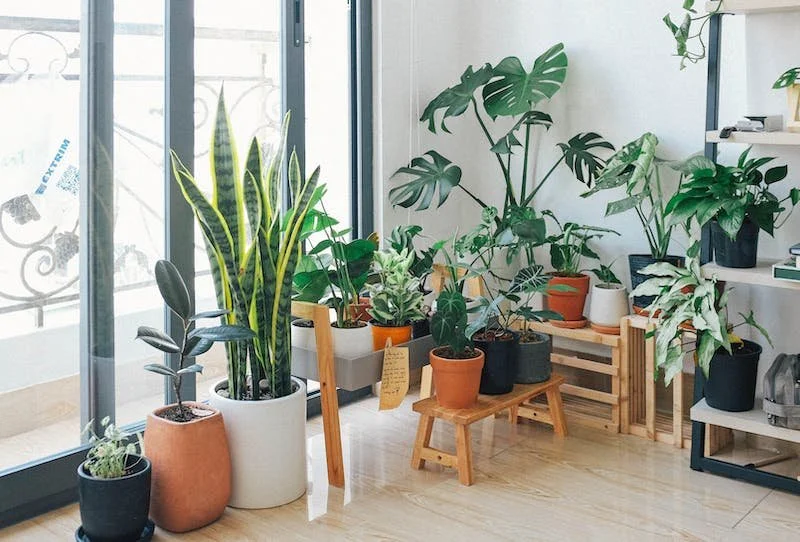The Comprehensive Comparison: Concrete vs. Asphalt Driveways - Which is Best for Your Home?
Selecting the right driveway material for your home is a crucial decision that affects both aesthetics and functionality. When it comes to driveway options, concrete and asphalt are two popular choices. Each material has its own set of advantages and considerations, making it essential to weigh the pros and cons before making a decision.
This comparison article explores the key factors to consider when choosing between concrete and asphalt driveways. From durability and cost to maintenance requirements and curb appeal, we delve into the essential aspects that can help you determine which option is best suited for your home.
By understanding the characteristics and differences between concrete and asphalt driveways, you can make an informed choice that aligns with your specific needs and preferences. Whether you need Sydney or Melbourne CBD concreters, concreters in Germany, or concreters in sunny Los Angeles, let's embark on this journey of exploration and evaluation to discover the ideal driveway material that will enhance both the beauty and functionality of your home.
Understanding Concrete Driveways
Concrete driveways offer a range of benefits and have become a popular choice for homeowners. They are known for their durability and longevity, making them a solid investment. Concrete driveways can withstand heavy loads and are resistant to weathering, cracking, and fading. Additionally, they provide a smooth and clean surface for vehicles and offer design flexibility with options for decorative finishes, textures, and colors.
Concrete driveways are versatile and can be customized to complement various architectural styles. They can be shaped to fit any space and can incorporate decorative elements like stamped patterns or exposed aggregate for added visual appeal. Furthermore, concrete driveways typically require minimal maintenance, with occasional sealing and cleaning to preserve their appearance and durability.
While concrete driveways are known for their longevity, they do require proper installation and curing to ensure optimal performance. It is essential to consult with experienced professionals who can provide expert guidance on site preparation, concrete mix design, and proper installation techniques. By understanding the characteristics and benefits of concrete driveways, you can assess whether they align with your specific requirements for a durable and visually appealing driveway.
Exploring Asphalt Driveways
Asphalt driveways present an alternative option with distinct advantages and considerations. They are known for their affordability, making them a popular choice for many homeowners. Asphalt driveways are relatively quick to install, requiring less time to set and cure compared to concrete driveways. This allows for faster access to the driveway after installation.
One of the notable benefits of asphalt driveways is their flexibility. They can withstand temperature changes and minor ground movements without cracking. This flexibility helps prevent the formation of cracks and reduces the need for repairs over time. Additionally, asphalt driveways offer a smooth and comfortable driving surface, thanks to their ability to absorb heat and provide excellent traction.
While asphalt driveways are generally durable, they may require more frequent maintenance compared to concrete driveways. Periodic sealing is necessary to protect the surface from moisture penetration and prevent oxidation, which can cause the asphalt to become brittle and fade in color over time. It's important to note that extreme weather conditions, such as very hot summers or harsh winters, can impact the lifespan and performance of asphalt driveways.
By understanding the characteristics and considerations of asphalt driveways, you can assess whether they align with your budget, flexibility, and maintenance preferences for a functional and cost-effective driveway solution.
Durability and Longevity
When comparing concrete and asphalt driveways, durability and longevity are key factors to consider. Concrete driveways are known for their exceptional durability, with a lifespan that can exceed 30 years or more when properly maintained. They can withstand heavy loads and are highly resistant to cracking, weathering, and erosion. Concrete's rigid structure makes it less prone to deformation caused by vehicle traffic, ensuring a long-lasting surface.
On the other hand, asphalt driveways also offer considerable durability, although their lifespan tends to be shorter compared to concrete. With regular maintenance, such as sealing every few years and patching any cracks or potholes, an asphalt driveway can last around 20 years. However, it's worth noting that asphalt driveways may be more susceptible to wear and tear caused by harsh weather conditions, particularly in regions with extreme temperature fluctuations.
To maximize the lifespan of either type of driveway, proper maintenance is crucial. This includes regular cleaning, sealing, and addressing any repairs promptly. Climate and usage patterns also play a role in the longevity of driveways. Considering your specific needs, budget, and the expected lifespan of each material can help you determine which option is best suited for your home.
By evaluating the durability and longevity of concrete and asphalt driveways, you can make an informed decision based on the anticipated lifespan and performance that aligns with your long-term goals for your driveway.
Cost Considerations
When choosing between concrete and asphalt driveways, cost is an important factor to consider. Both materials have distinct cost implications, including initial installation expenses and long-term maintenance considerations.
Concrete driveways typically have higher upfront costs compared to asphalt. The cost of concrete can vary depending on factors such as the region, driveway size, and desired finishes. However, it's important to note that concrete driveways' long lifespan and minimal maintenance requirements can make them a cost-effective investment in the long run.
On the other hand, asphalt driveways are generally more affordable to install initially. The cost of asphalt is influenced by factors such as the price of crude oil and the availability of materials in the local market. While asphalt driveways may require more frequent maintenance, such as sealing and occasional repairs, the overall maintenance costs are typically lower compared to concrete.
When considering costs, it is important to weigh the upfront expenses against the long-term value and maintenance requirements of each material. Assessing your budget and evaluating the anticipated lifespan and maintenance needs of concrete and asphalt driveways will help you make an informed decision that aligns with your financial considerations and preferences.
Aesthetics and Curb Appeal
The visual impact and curb appeal of your driveway are significant factors to consider when choosing between concrete and asphalt. Concrete driveways offer a range of design options, allowing for customization and aesthetic versatility. They can be stamped, stained, or textured to mimic the appearance of natural materials such as brick, stone, or tile. With a variety of color choices available, concrete driveways can be tailored to complement the architectural style and landscaping of your home, enhancing its overall curb appeal.
In contrast, asphalt driveways have a distinct black color that provides a clean and sleek appearance. While they offer fewer design options compared to concrete, they can still be aesthetically appealing in their simplicity. The dark color of asphalt can create a striking contrast against green landscapes and architectural elements.
Choosing between concrete and asphalt driveways in terms of aesthetics depends on personal preference and the desired look for your property. Consider factors such as the architectural style of your home, surrounding landscape, and your preference for design versatility or a more classic and understated appearance. By assessing these factors, you can determine which material will best enhance the aesthetics and curb appeal of your home.
Maintenance Requirements
Understanding the maintenance needs of concrete and asphalt driveways is crucial for long-term durability and cost considerations. Concrete driveways generally require less maintenance compared to asphalt driveways.
Concrete driveways benefit from periodic sealing, typically every 2-5 years, to protect against moisture absorption and staining. Regular cleaning with mild detergent and water helps preserve its appearance. Additionally, addressing any cracks or surface damage promptly is important to prevent further deterioration.
Asphalt driveways require more frequent maintenance to ensure their longevity. Regular sealing every 2-3 years helps protect against oxidation, water penetration, and the formation of cracks. It is also essential to inspect and repair any cracks or potholes to prevent them from expanding and compromising the integrity of the driveway.
Both types of driveways can benefit from regular cleaning to remove debris, oil stains, and other contaminants. Sweeping or using a leaf blower can help maintain a clean surface and prevent damage from abrasive particles.
Consider your lifestyle, time availability, and maintenance preferences when choosing between concrete and asphalt driveways. Concrete driveways generally have lower maintenance requirements, while asphalt driveways need more frequent attention to preserve their condition. By factoring in maintenance needs, you can select a driveway material that aligns with your willingness and ability to dedicate time and effort to upkeep.
Environmental Considerations
Considering the environmental impact of your driveway choice is becoming increasingly important. Both concrete and asphalt driveways have their own ecological implications.
Concrete driveways have a lower carbon footprint compared to asphalt. The production process for concrete emits fewer greenhouse gases, and it can incorporate recycled materials such as fly ash and aggregates. Concrete also has a higher reflectivity, which helps reduce the heat island effect in urban areas.
Asphalt driveways, on the other hand, are more recyclable than concrete. Old asphalt can be reclaimed and reused for new projects, reducing the demand for new materials. Asphalt's dark color also aids in snow and ice melting during winter months, potentially reducing the need for chemical de-icers.
Regardless of the material chosen, proper installation techniques and responsible waste disposal during construction contribute to minimizing the environmental impact.
When deciding between concrete and asphalt driveways, take into account your environmental values and the potential ecological benefits associated with each material. Explore sustainable practices, such as permeable pavers or incorporating green spaces alongside the driveway, to further enhance the eco-friendliness of your choice. By considering the environmental aspects, you can make a more conscious decision that aligns with your commitment to sustainability.
Making an Informed Choice for Your Driveway
Choosing between concrete and asphalt driveways is a significant decision that involves evaluating various factors. Each material has its own strengths and considerations, allowing homeowners to find the best fit for their specific needs.
By understanding the characteristics, costs, durability, maintenance requirements, aesthetics, and environmental impact of concrete and asphalt driveways, you can make an informed choice that aligns with your priorities and preferences. Consider the longevity, maintenance needs, and visual appeal that each material offers, taking into account your budget and the overall curb appeal you desire for your home.
Ultimately, there is no one-size-fits-all answer when it comes to concrete vs. asphalt driveways. It is about finding the balance between functionality, durability, cost-effectiveness, and aesthetic appeal that suits your unique circumstances.
Consulting with experienced professionals in the field can provide valuable guidance and insights tailored to your specific requirements. With the knowledge gained from this comprehensive comparison, you can confidently select the driveway material that will enhance the beauty, functionality, and value of your home for years to come.















